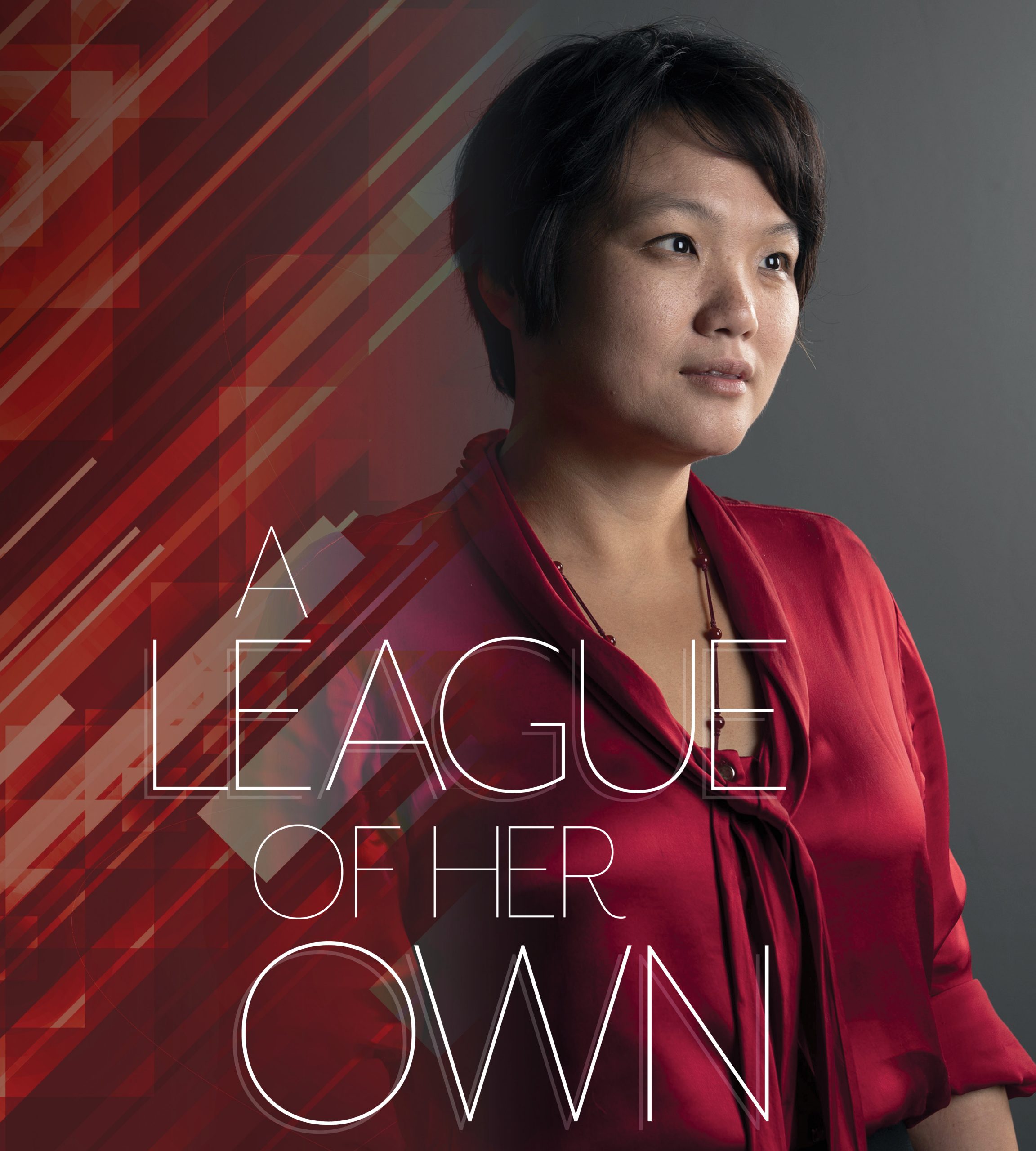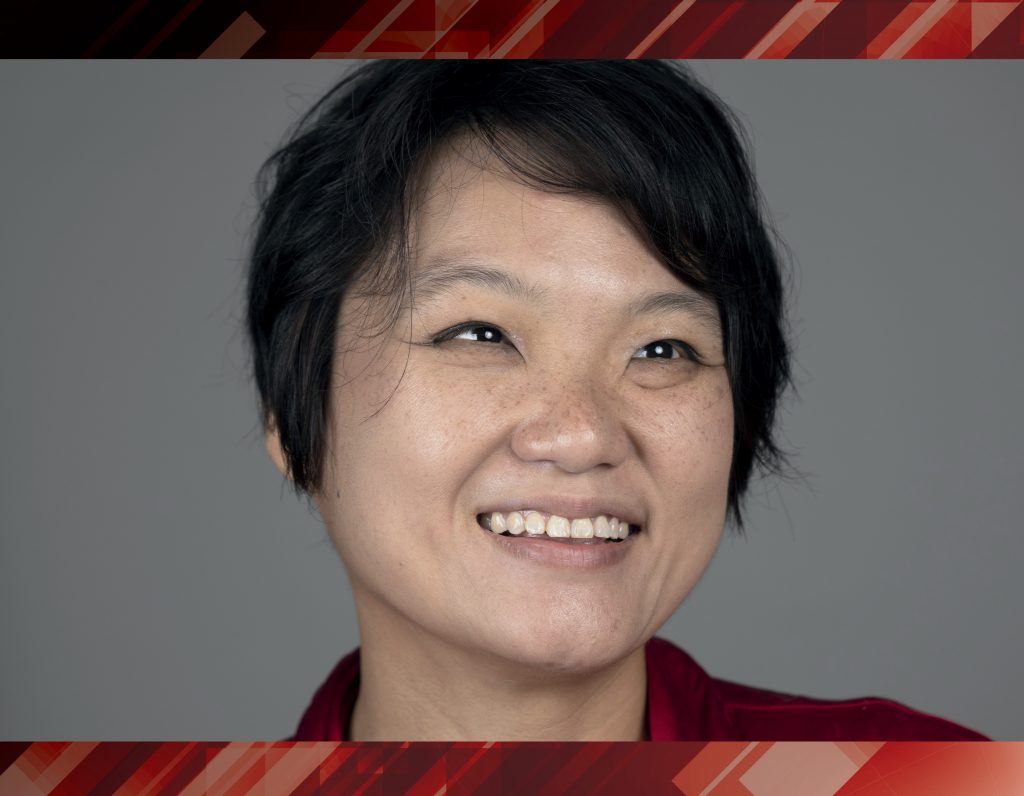Language
You can read the magazine in one of the following languages
Geolocation
You can read the global content or the content from your region

Where do you go once you’ve reached the top? In Jessica Tan’s case, you smash through the ceiling and keep right on going. The Ping An Insurance (Group) Company of China Executive Director and Co-CEO seems to be as unstoppable as the US$172 billion Chinese conglomerate itself. Just as Ping An has transitioned from insurance company to Tan’s own vision of a “technology-plus-finance” juggernaut, the Singaporean has gone from Massachusetts Institute of Technology (MIT) student to McKinsey Partner to a leading figure in international business.
In 2020, a year largely lost in the storm of the COVID-19 pandemic, Fortune magazine named Tan the second most powerful woman outside of the US, two spots up the ladder from her list debut the year before. Under her leadership, inclusivity has become a major part of Ping An’s employment strategy; almost 50 per cent of the Group’s employees are women, as are more than three-quarters of Ping An Life’s senior business directors.
To gain a clearer understanding of this transformative force of nature, it’s necessary to understand the environment that facilitated her upward trajectory. The origins of the multibillion-dollar Ping An Insurance (Group) Company of China can be traced back to 1988, when the firm was founded from scratch in Shenzhen by businessman Peter Ma as China’s first joint-stock insurance company. The name Ping An was chosen to send a clear message to potential clients; it translates as “safety”.

“We see an opportunity to expand our more tech-driven models overseas because they don’t require significant, in-depth local knowledge.”
Four years later, Ping An had expanded to become a national insurance company. In 1994, it stepped into China’s fledgling individual life insurance sector with the introduction of a new marketing system. The same year, it became the first Chinese financial institution to allow foreign investors. Morgan Stanley and Goldman Sachs were among the first on board.
Ping An began to move in other financial directions in 1995 when it entered the securities market. Banking joined the Ping An portfolio in 2003 when it acquired the Fujian Asia Bank; the Shenzhen Commercial Bank was acquired in 2006 and became Ping An Bank.
The company’s first steps towards its latest venture happened in 2012 with the establishment of Lufax, a wealth management platform. The aim of Lufax was to provide an entry point for Ping An into the fintech and healthtech sectors, plans for which were well underway by the time Tan arrived at the company in 2013.
Armed with degrees in electrical engineering and economics from MIT, Tan’s career began in 2000 when the young Singaporean became a consultant with McKinsey & Company. There, she worked with clients from all over the world to transform their companies and increase the use of cutting-edge technology in their operations.
Ever driven, by 2008 Tan had become a Partner in McKinsey’s Financial Services and Business Technology division. During her time at McKinsey, she took on the task of helping Ping An establish a shared services centre in China. This job led to a meeting with the Group’s Founder, who encouraged Tan to take more risks in her career.
Tan took Ma’s advice to heart, and left McKinsey for Ping An’s Shenzhen office in 2013. Tan’s journey within the company began with the role of Group CIO, but upon arrival she continued to advocate for better use of technology. Technology and research and development have now become the Group’s cornerstones, powering its retail financial services operations to a client base of more than 220 million retailers and around 611 million online customers.
As CIO and later COO, Tan outlined her vision of “technology plus finance” as being key to Ping An’s ongoing success in the 21st century. Lufax, Chinese car sales website Autohome and Ping An Smart City – which incorporates cloud computing, blockchain and artificial intelligence into traditional infrastructure – are just some of the Group’s ventures that have benefited from her tech-heavy approach.
“We’ve always been very aggressive on the digitization front,” Tan told the McKinsey Quarterly in late 2020. “We now spend more than US$1.7 billion of our revenue [on technology R&D] every year. Even though we never really know how technology will change, we think it’s important to have these capabilities.”
With these enterprises a local success, the natural move seemed to be to take Ping An’s tech offerings global – and it was here that the universal appeal of Tan’s agenda became clear. “We see an opportunity to expand our more tech-driven models overseas because they don’t require significant, in-depth local knowledge and the build-up of local resources, channels, customer preference,” she told the McKinsey Quarterly. “Hopefully, this creates a more symbiotic relationship as opposed to the usual demonized caricature of big Chinese giants coming in to take your share.”
That xenophobic fear is becoming more and more redundant as Chinese companies find success in a global market that seems more ready for them than ever, from Tencent to TikTok. In Ping An’s case, the breakthrough came in the midst of a once-in-a-century pandemic.
Since becoming Deputy Group CEO in late 2017, Tan has spearheaded Ping An’s telehealth initiatives. Ping An HealthKonnect (an online healthcare management platform that caters to 800 million people), Ping An Smart Healthcare (the medical arm of Smart City) and Ping An Good Doctor (a free end-to-end online consultation platform and the Group’s major foray into telehealth) were the fruit of these efforts.

“If anything, COVID has taught us that we need to be even more aggressive.”
By December 2019, Tan was Ping An Group Co-CEO and Executive Director, reports of an extremely contagious virus in Wuhan were becoming more frequent and Good Doctor had become China’s largest online healthcare services platform. As the new year dawned, visits to Good Doctor skyrocketed – by the peak of the pandemic, more than 1.11 billion virtual consultations had been undertaken.
The platform’s popularity and effectiveness cushioned the economic blow of the pandemic for Ping An. Good Doctor generated more than US$987 million in revenue for the Group throughout 2020, a significant uptick over the previous year. At the same time, HealthKonnect pioneered en-masse COVID-19 testing in China, while Ping An Smart Healthcare’s digitization scheme helped with social distancing.
“If anything, COVID has taught us that we need to be even more aggressive,” Tan told the McKinsey Quarterly. “We have 1.5 million employees, and I had contingencies for around 20 per cent of them to work remotely at any point in time.” At the height of the pandemic, lockdown measures necessitated all her staff work from home, and Tan made it possible in five days.
It’s qualities like these, and her foresight in bringing the digital future into the present before it was necessary, that’s made her one of the most powerful business leaders in the world. Fortune once again smiled on Tan in 2021, recognizing her efforts during COVID-19 with the number six spot on its World’s 50 Greatest Leaders list.
Tan, meanwhile, is getting on with the job. A fierce proponent of equality in the workplace, her efforts to raise the profile of women within the company are taking hold. Ping An Life’s Talent Program has become a gateway for high-potential women to enter the insurance industry, while Ping An’s Mother’s Needlework charity, which encourages women from the Yi ethnic group to create and sell handcrafted goods, has recently been extended from China into Cambodia.
As the world finds a new groove post-COVID, Ping An Group – and Tan – are set to remain major players, and her drive has lost none of its horsepower. “Whatever business we enter, we have to be in the top three,” she told the McKinsey Quarterly. “Our competitiveness will improve as the structure of the industry changes.”